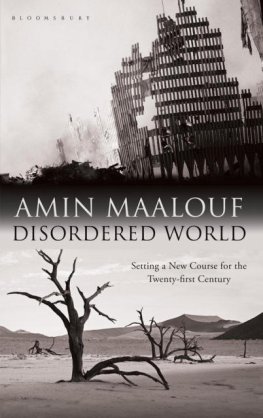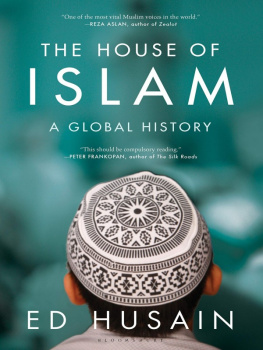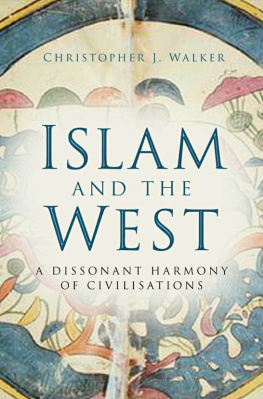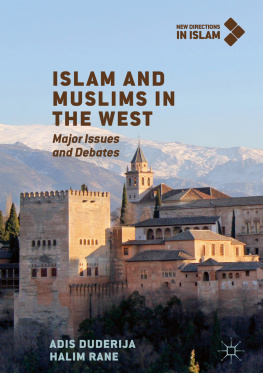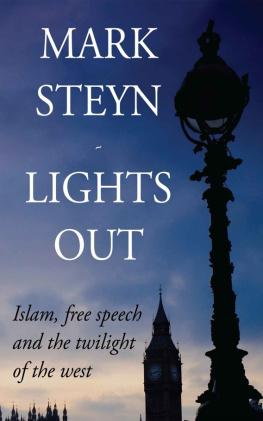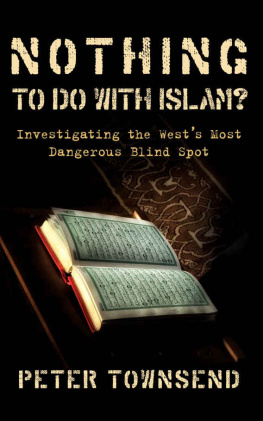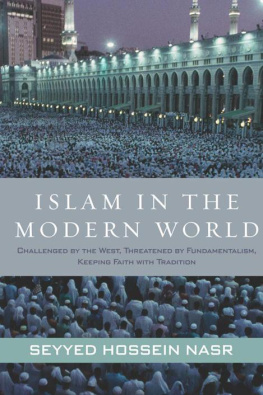PREFACE
I T IS LATE MARCH , the blackbirds are singing and the cherry trees are in bloom. In this season of renewal, I am putting the finishing touches to a book I began seven years ago. On reaching the age of seventy, I was encouraged to commit to paper ideas and reflections I had shared with friends and colleagues over many years. I was reluctant to write this book, but having been invited by the Centre of Islamic Studies at Cambridge University to become a Visiting Fellow, I was able to test the ideas in lectures and seminars with students and faculty, and this has stimulated me to complete the task.
I grew up under the shadow of the atom bomb. I remember the terror this invoked. We were the first generation to live in the knowledge that we could destroy ourselves and all life on earth. This new power separates our generation from all previous generations. Since the creation of the atom bomb, many other ways of total destruction have been developed. We are now enveloped in an environmental crisis, and the warnings from the scientists of the dangers we face are becoming ever more strident. The impact upon nature of what we have now produced is so great that we are changing the climate. Global warming is an ever-present reminder that something is fundamentally wrong and we are heading towards catastrophe.
But the environmental crisis is not alone. The explosion in the population, financial crises, social and political instability, the growth of mental illness amongst the young, and a host of other problems beset us. Humanity seems to have lost its way. But we are all in this together, we all share this beautiful blue globe which we first saw when its picture was taken from the moon, and its destruction touches each and every one of us.
In our interconnected world whatever happens is instantly known everywhere. We witness the growing tensions and outbreaks of violence between and within different communities and nations as they unfold. In the UK, we are being riven by our separation from the European Community, which has divided our nation and poisoned our politics. A few days ago, fifty worshippers were gunned down when they were at Friday prayer in two Mosques in Christchurch, New Zealand. At the time the massacre was taking place, thousands of children filled the main square of the city. They were demonstrating as part of a world-wide movement against global warming in which the children are castigating the adults for not taking climate change seriously and endangering their future. In England the day after the massacre, the windows of five mosques were smashed, and in Utrecht a Muslim gunned down five people in a tram. The cycle of terror is escalating fuelled by fear, hatred and revenge.
But how different it was some forty years ago! In 1976, a festival celebrating the civilisation of Islam took place in London. The World of Islam Festival, as it was called, included a dozen exhibitions coordinated by the Arts Council of Great Britain and was inaugurated by Her Majesty the Queen. At the time, little was known about Islam and the response to the Festival was overwhelming. The beauty, humanity and intelligence of a civilisation that dominated Afro-Eurasia for more than a thousand years was a revelation, and was warmly received by a public keen to learn about an unfamiliar world. Yet this promising opening was soon eclipsed. Not even three years had passed before a very different image of Islam commanded the public sphere with the Iranian Revolution. This was the beginning of a polarisation between an increasingly distorted image of Islam and the West, that culminated in 9/11 and the War on Terror.
Central to my book is the idea that we are now living in the Age of Crises, and have been since the creation of the atom bomb. The ever-present reality that we can destroy ourselves and all life on earth in multiple ways hovers over our existence. In the following pages , the attempt is made to understand how we have arrived in this Age of Crises, and to untangle the confusion and hostility that now exists between Islam and the West.
In order to do this, I am proposing a change of perspective, a different narrative and set of criteria. The narrative which powers the modern world is that of progress and it has gathered up all of history in its wake. Islam and pre-modern cultures and civilisations are viewed through this prism. However, the modern idea of progress belongs uniquely to the West. It makes little sense when applied to Islam and premodern societies. I propose in the following pages to replace the criterion of progress with that of balance, a central principle in Islamic civilisation , and indeed an essential precondition for the sustainability of any culture or civilisation. Our Age of Crises can be seen as a result of the loss of balance that has taken place in our modern way of life; the balance between the material and the spiritual, and between ourselves and the environment in which we live.
The book begins with an introduction which sets out the arguments for a new narrative and outlines the criteria of balance that underlie the thesis. The main part of the book comprises seven chapters, six of which encompass themes which are applied firstly to Islam and then to the West. These themes are what we might call key components in the formation and historical development of the two worlds. The final chapter addresses the Age of Crises, and a brief conclusion summarises how Islam and the West are viewed from the perspective of balance. Also included is a glossary of terms and principles that have arisen out of the study, some of which have been newly coined.
My hope is that this comparative analysis makes sense of our Age of Crises, illuminates our understanding of the modern world, and enables us to see Islam and Islamic civilisation in a truer light.
This book has come out of my life experience, and in that journey, so many people have opened my eyes and contributed to my understanding. I want to thank all of them and especially those who have supported, encouraged and engaged in the research, editing and production of this work over the last seven years. Any mistakes or misjudgements are entirely my own .
Cambridge, March 2019
INTRODUCTION
THE POWER OF THE PRESENT NARRATIVE
I SLAM AND THE WEST have been neighbours for 1400 years. The West grew up under the shadow of Islam, and then after the Renaissance, in a dramatic reversal of roles, the West became world conquerors and subdued all other cultures and civilisations, including Islam. This transformation ushered in the modern world, a world unlike any that had existed before. A key development in this transformation took place when, during the Enlightenment, a narrative was produced which introduced the idea of human progress. This was a revolutionary concept that would replace the Christian narrative of salvation.
This new narrative saw the Christian millennium as a dark age of ignorance and superstition. It became known as the Medieval or Middle Ages, a period between the illumination of the ancients and the light of the modern world. Later, Islam was introduced into this narrative by giving it a golden age during Europes Dark Ages, a time when it kept alight the torch of Greek and Roman knowledge. It was said that, having passed the torch to the Europeans, who then accelerated into their dynamic arc of progress, the Muslims went into a deep decline and stagnation. The world of Islam is now part of a developing world that is having to catch up with the West. In brief, the narrative tells of the triumph of the West and how the rest were left behind, including Islam.


